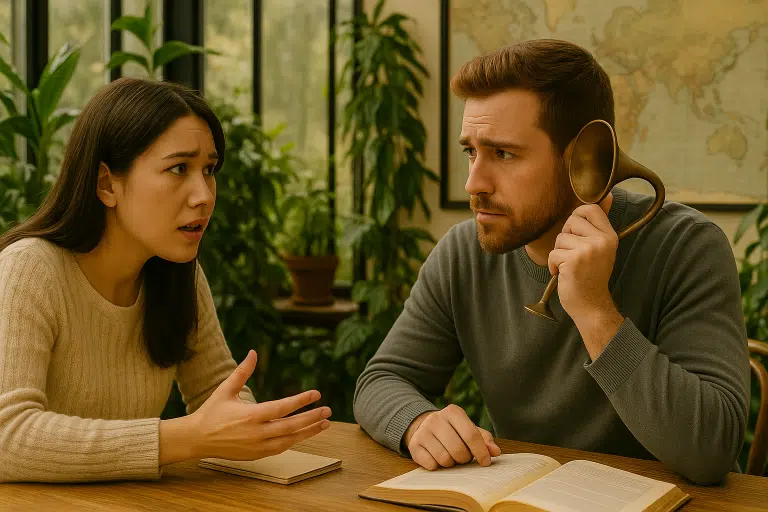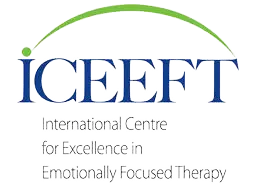Active listening is a fundamental aspect of effective communication within a healthy and thriving relationship. It encompasses not only the act of expressing our own thoughts and emotions but also dedicating ourselves to attentively listening to our partner. By engaging in active listening, we create an environment that promotes understanding, empathy, and a deeper connection between partners.
In this article, we will explore five strategies that can help improve active listening skills. As well briefly introduce some of the common barriers to active listening.
Give Your Undivided Attention
One of the fundamental aspects of active listening is giving your partner your full and undivided attention. This means putting away distractions such as phones or laptops and focusing solely on what they are saying. Maintain eye contact, nod, and provide verbal or nonverbal cues to show that you are fully engaged in the conversation.
Practice Empathy and Understanding
Active listening goes beyond simply hearing the words spoken by your partner. It involves empathizing and understanding their perspective. Put yourself in their shoes and try to see things from their point of view. Show empathy by acknowledging their emotions and validating their experiences. This creates a safe and supportive space for open and honest communication.
Avoid Interrupting and Jumping to Conclusions
Interrupting your partner or jumping to conclusions can hinder effective communication. Allow your partner to express themselves fully without interruption. Avoid assuming or guessing what they will say next. Instead, patiently listen until they have finished speaking. This shows respect for their thoughts and feelings and encourages them to share more openly.
Reflect and Clarify
To ensure a clear understanding of your partner’s message, practice reflective listening. Repeat or paraphrase what your partner has said to confirm that you have understood correctly. This not only clarifies any potential misunderstandings but also shows your partner that you are actively engaged in the conversation and genuinely interested in what they have to say.
Be Nonjudgmental and Non-defensive
Creating a safe and nonjudgmental environment is essential for effective communication. Avoid criticizing, blaming, or becoming defensive when your partner shares their thoughts or feelings. Instead, respond with openness and curiosity. Encourage them to express themselves honestly without fear of judgment. This fosters trust and encourages open dialogue in the relationship.
What are the barriers to active listening and how to overcome them?
Active listening is an essential aspect of effective communication, but there are several barriers that can hinder it. Here are some common barriers to active listening and how to overcome them:

Distractions
Distractions such as phones, laptops, or other external stimuli can hinder active listening. To overcome this barrier, it is essential to give your partner your full and undivided attention. Put away any distractions and focus solely on what they are saying. Maintain eye contact, nod, and provide verbal or nonverbal cues to show that you are fully engaged in the conversation.
Lack of Empathy
Active listening involves empathizing and understanding your partner’s perspective. Without empathy, it can be challenging to fully engage in the conversation. To overcome this barrier, put yourself in your partner’s shoes and try to see things from their point of view. Show empathy by acknowledging their emotions and validating their experiences. This creates a safe and supportive space for open and honest communication.
Language Barriers
Language barriers can hinder active listening, particularly in multicultural or multilingual settings. To overcome this barrier, it is essential to use clear and concise language. Avoid using jargon or technical terms that may be unfamiliar to your partner. If necessary, use visual aids or gestures to help convey your message.
Misinterpretation
Misinterpretation can occur when the listener does not fully understand the speaker’s message. To overcome this barrier, practice reflective listening. Repeat or paraphrase what your partner has said to confirm that you have understood correctly. This not only clarifies any potential misunderstandings but also shows your partner that you are actively engaged in the conversation and genuinely interested in what they have to say.
Preconceived Notions or Biases
Preconceived notions or biases can hinder active listening by clouding your judgment and preventing you from fully understanding your partner’s perspective. To overcome this barrier, be aware of your biases and actively work to set them aside. Listen with an open mind and avoid making assumptions or jumping to conclusions. Respond with openness and curiosity, encouraging your partner to express themselves honestly without fear of judgment.
In the end
Improving active listening skills is an ongoing process that requires conscious effort and practice. By implementing the five strategies, you can significantly enhance communication in your relationship. But keep in mind that there are several barriers that can hinder active listening. By being aware of these barriers and actively working to overcome them, you can significantly enhance your active listening skills and ultimately improve your relationships.
Remember, effective communication is a two-way street, and both partners must be committed to active listening for a stronger, more fulfilling connection.
References:
Michael P. Nichols. The Lost Art of Listening: How Learning to Listen Can Improve Relationships, 1995.
Stewart, John, and Milt Thomas. “Dialogic Listening: Sculpting Mutual Meanings,” in Bridges Not Walls, ed. John Stewart, 6th edition, (New York: McGraw- Hill, 1995), pp. 184-201.
Jeremy Sutton. Active Listening: The Art of Empathetic Conversation, 2016.












